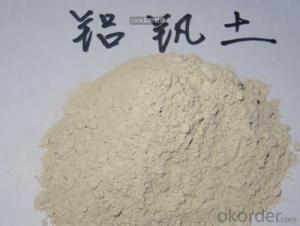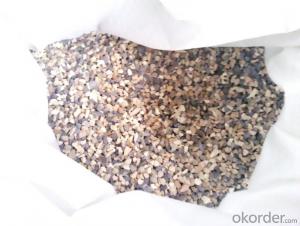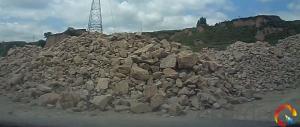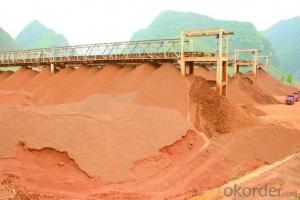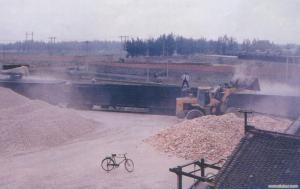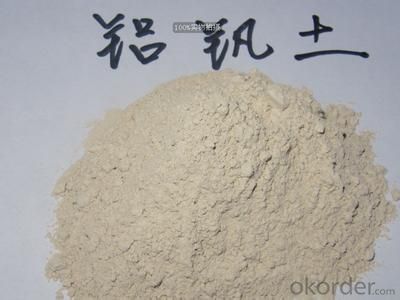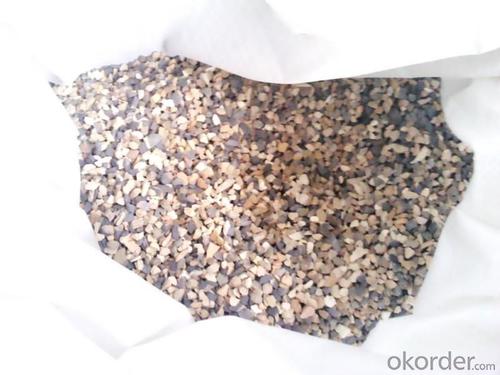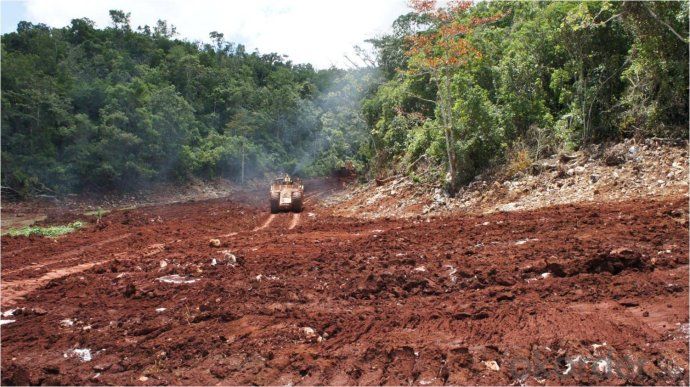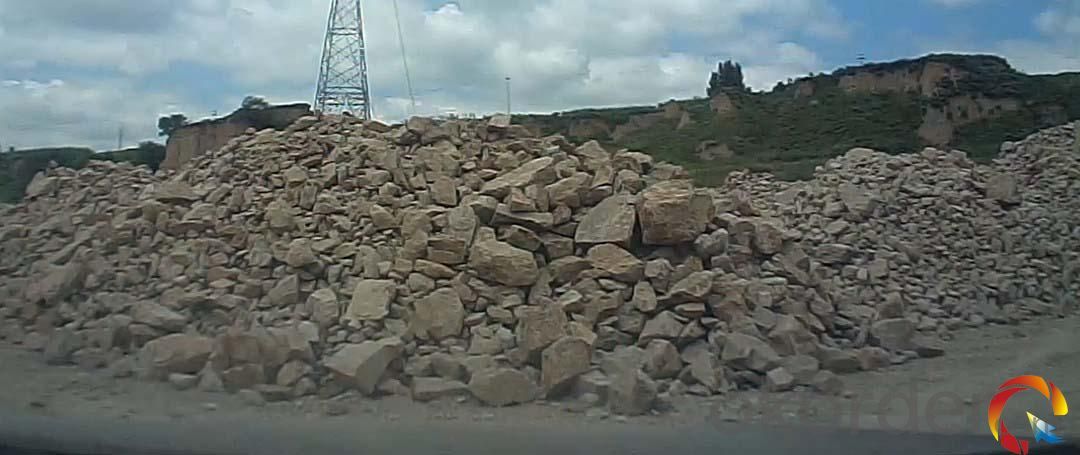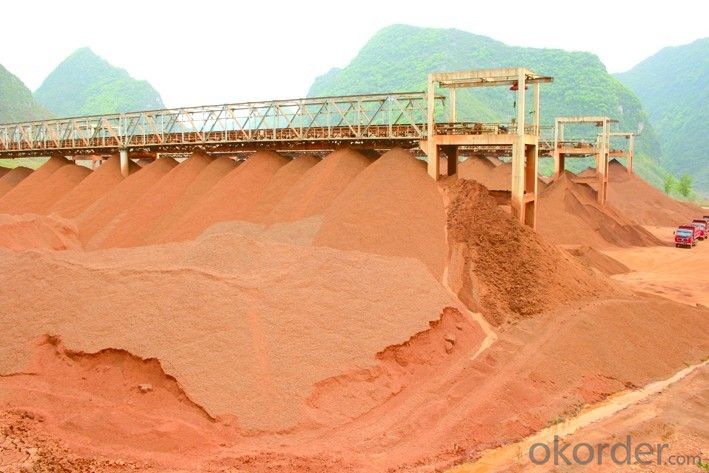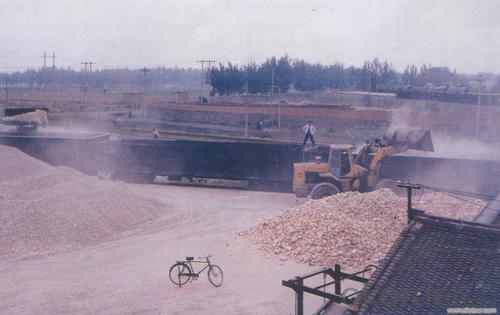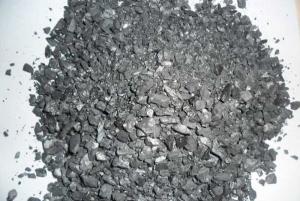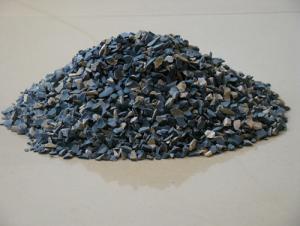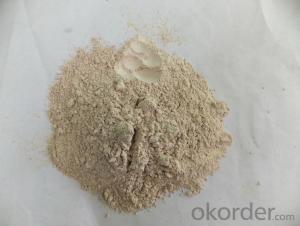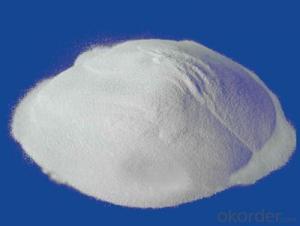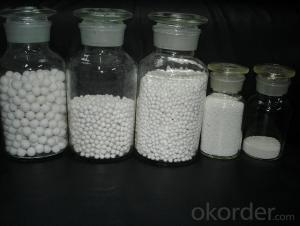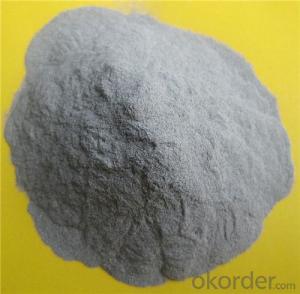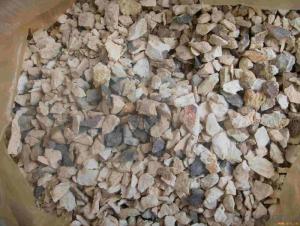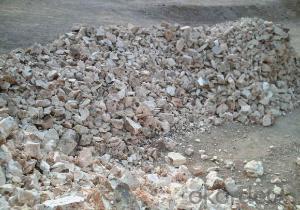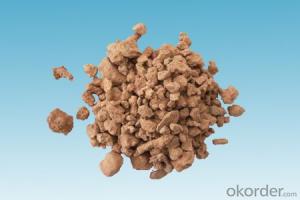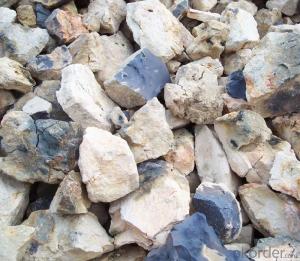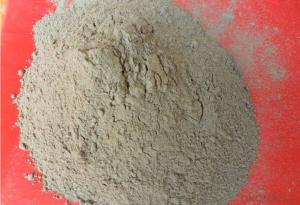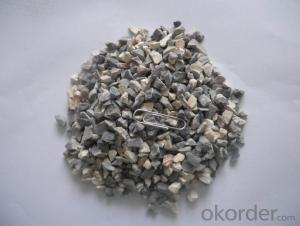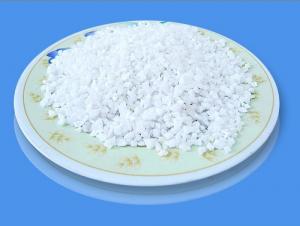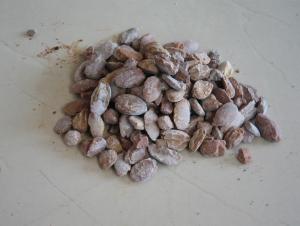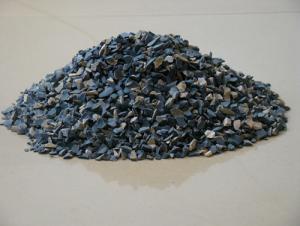Raw Materials for Refractory:Kiln Calcined Bauxite for High Alumina Brick of CNBM in China
- Loading Port:
- Tianjin
- Payment Terms:
- TT OR LC
- Min Order Qty:
- 1 m.t.
- Supply Capability:
- 10000000 m.t./month
OKorder Service Pledge
OKorder Financial Service
You Might Also Like
Kiln Calcined Bauxite for High Alumina Brick of CNBM in China
1.Structure of Calcined Bauxite Description
Bauxite (aluminous soil; Bauxite) is also called the alumina or bauxite, main ingredients are alumina, hydrated alumina containing impurities, is an earthy mineral. White or gray, brown and yellow or light red by iron. From 4 to 3.9 g/cm3 density, hardness, 1 ~ 3 is not transparent, very brittle. Very difficult to melt. Insoluble in water, soluble in sulfuric acid, sodium hydroxide solution. Mainly used for aluminium, refractory material.
2.Main Features of the Calcined Bauxite
Calcined bauxite is one of the principal ore of aluminum. Calcined bauxite contains hydrous aluminum oxides and aluminum
hydroxides, formed through the laterization of aluminous rocks in tropical and subtropical areas .Calcined bauxite is obtained by calcining (heating)superior grade bauxite at high temperature (from 85OC to 1600C) .This removes moisture there. By increasing the alumina content,compared to an alumina content of about 57%to 58% in raw bauxite, calcined bauxite has an alumina content of 84%to88%.The heating is carried out in rotary kilns.
3. Calcined Bauxite Images
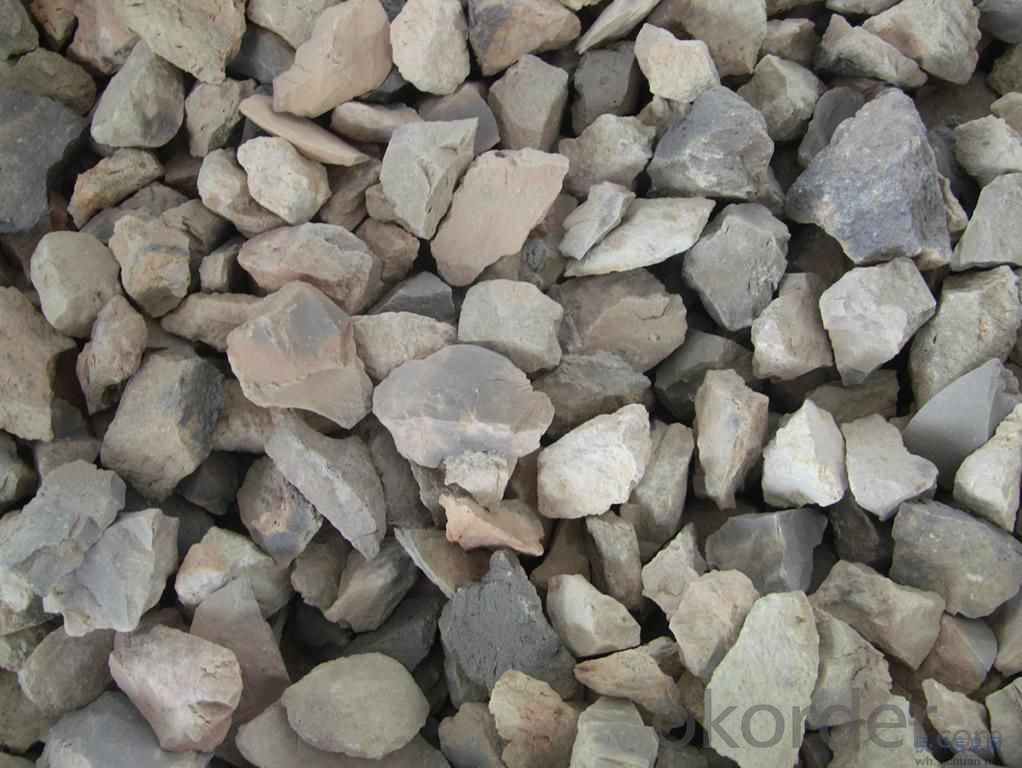
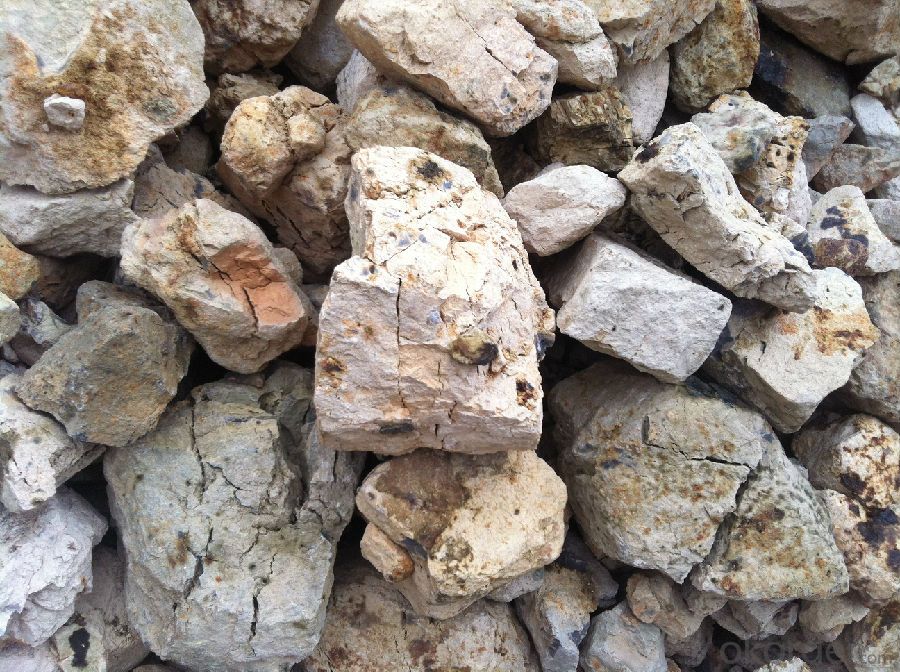
4. Calcined Bauxite Specification
| Place of Origin: | Henan, China (Mainland) | Shape: | Brick | Material: | Alumina Block |
| SiO2 Content (%): | International standard | Al2O3 Content (%): | ≥65 | MgO Content (%): | International standard |
| CaO Content (%): | International standard | Refractoriness (Degree): | 1770°< Refractoriness< 2000° | CrO Content (%): | International standard |
| SiC Content (%): | International standard | Model Number: | RL-65 | Brand Name: | cnbm |
| Fe2O3 %: | ≤2 | Refractoriness: | ≥1790°C | Apparent porosity: | ≤24% |
| Cold crushing strength (Mpa): | ≥49.0 | Refractoriness under load(0.2MPa): | ≥1500°C | Reheating Linear Change (1500°C, 2h) %: | +0.1~ -0.4 |
| Size: | 230*114*65/75 | Sample: | free | Price: | factory outlets |
5.FAQ of Calcined Bauxite
1). Q: Are you a factory or trading company?
A: We are a factory.
2). Q: Where is your factory located? How can I visit there?
A: Our factory is located in ShanXi, HeNan, China. You are warmly welcomed to visit us!
3). Q: How can I get some samples?
A: Please connect me for samples
4). Q: Can the price be cheaper?
A: Of course, you will be offered a good discount for big amount.
- Q: What are the materials of white firebricks?
- The commonly-used firebricks include alumina bricks, corundum bricks, chamotte bricks, high alumina bricks, diatomite bricks, zircon bricks, lightweight corundum bricks, zirconia bubble bricks and so on ~~~
- Q: How to understand qualitative and qualitative refractory materials?
- Such as amorphous refractory castable, referred to as bulk loading, cast material, ramming material, refractory clay etc., utensils and other special products. Amorphous refractory material products, refractory heat insulating bricks and experimental and industrial crucible, spraying materials, such as burning bricks, electric melting brick, turn it into required shape and process heat treatment in where it is used.
- Q: Which industry does refractory belong to?
- It belongs to decoration industry.
- Q: What are the physical properties of refractory material?
- The mechanical properties of refractory material include compressive strength, volume density and sclerosing, slag resistance, elastic modulus, thermal shock resistance, oxidation resistance, bibulous rate, fluidity, resilience, bond strength and slump, electrical conductivity, specific heat, heat capacity, the impact strength, linear change, torsional strength, stomatal aperture distribution, resistance to acid, etc. The use performance of refractory material include refractoriness, thermal emissivity, condensation, porosity, coefficient of thermal expansion. Thermal properties of refractory material include thermal conductivity, temperature conductivity, plasticity, the hydration resistance, creep performance. The physical properties of the refractory materials include structure performance, mechanical properties, shear strength, load softening temperature, CO erosion resistance. The structure properties of the refractory materials include porosity, alkali resistance and sintering. The operating performance of refractory material include consistency, tensile strength, the use performance and operating performance, wear resistance, bending strength, thermal properties.
- Q: What is the use of refractory?
- Refractories mainly provide stable working environment for high temperature operation , such as metallurgical industry (steel ladle, hot-metal bottle, torpedo car and most places directly in contact with molten steel and iron), chemical industry (coke oven cokeing, dry quenching engineering) and building materials industry (lime kiln and glass kiln)
- Q: The difference between refractory and thermal insulation material
- In simple terms, refractoriness is different. The refractoriness of refractory is high while that of insulation material is low.
- Q: What kind of foundry ingot refractory materials are there? Please be more detailed.
- Classification of refractory materials used in foundry smelting process: refractory brick, siliceous brick, high alumina brick, corundum brick, magnesia brick, magnesia brick, magnesia carbon brick. Unshaped refractory materials: ramming material, castable, refractory cement, silica, magnesia, etc.
- Q: Which brand of refractory fiber hard thermal insulation board is better?
- One colleague said Huayou refractory fiber hard thermal insulation board is good. The size (mm): 600*400*60. refractory temperature: 1770 ~ 2000 ℃ (℃), and the price is 2850 yuan a ton.
- Q: Could you tell me the fire-resisting time of class B fire proof door?
- Could you tell me the fire-resisting time of class B fire proof door?
- Q: Pals who know something about fire resistant material please tell me how many types of refractory material there are
- Refractory materials used in special applications include high temperature oxcide, such as alumina, lanthanum oxide, beryllium oxide, calcium oxide, zirconia and other, refractory compounds, such as carbides, nitrides, borides, silicides and sulfides; high temperature composite materials, mainly contain metal ceramic, high temperature inorganic coatings and fiber reinforced ceramics.
Send your message to us
Raw Materials for Refractory:Kiln Calcined Bauxite for High Alumina Brick of CNBM in China
- Loading Port:
- Tianjin
- Payment Terms:
- TT OR LC
- Min Order Qty:
- 1 m.t.
- Supply Capability:
- 10000000 m.t./month
OKorder Service Pledge
OKorder Financial Service
Similar products
Hot products
Hot Searches
Related keywords
